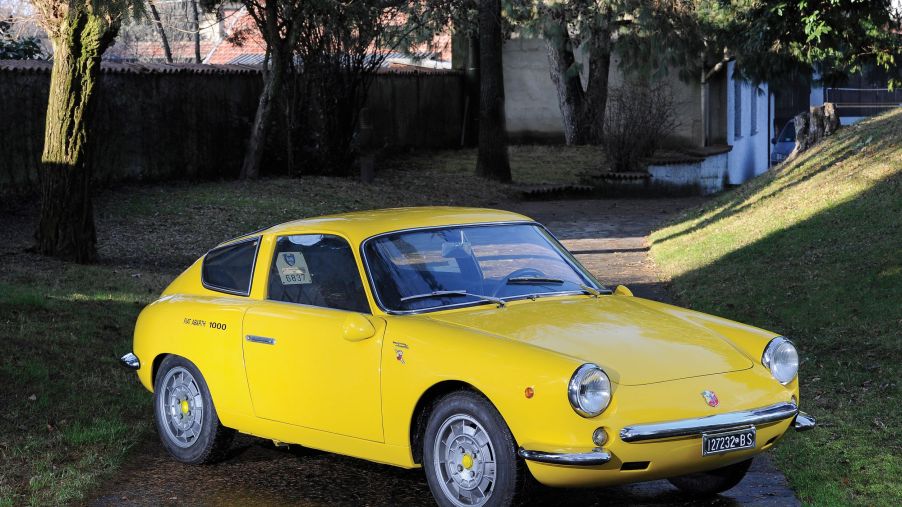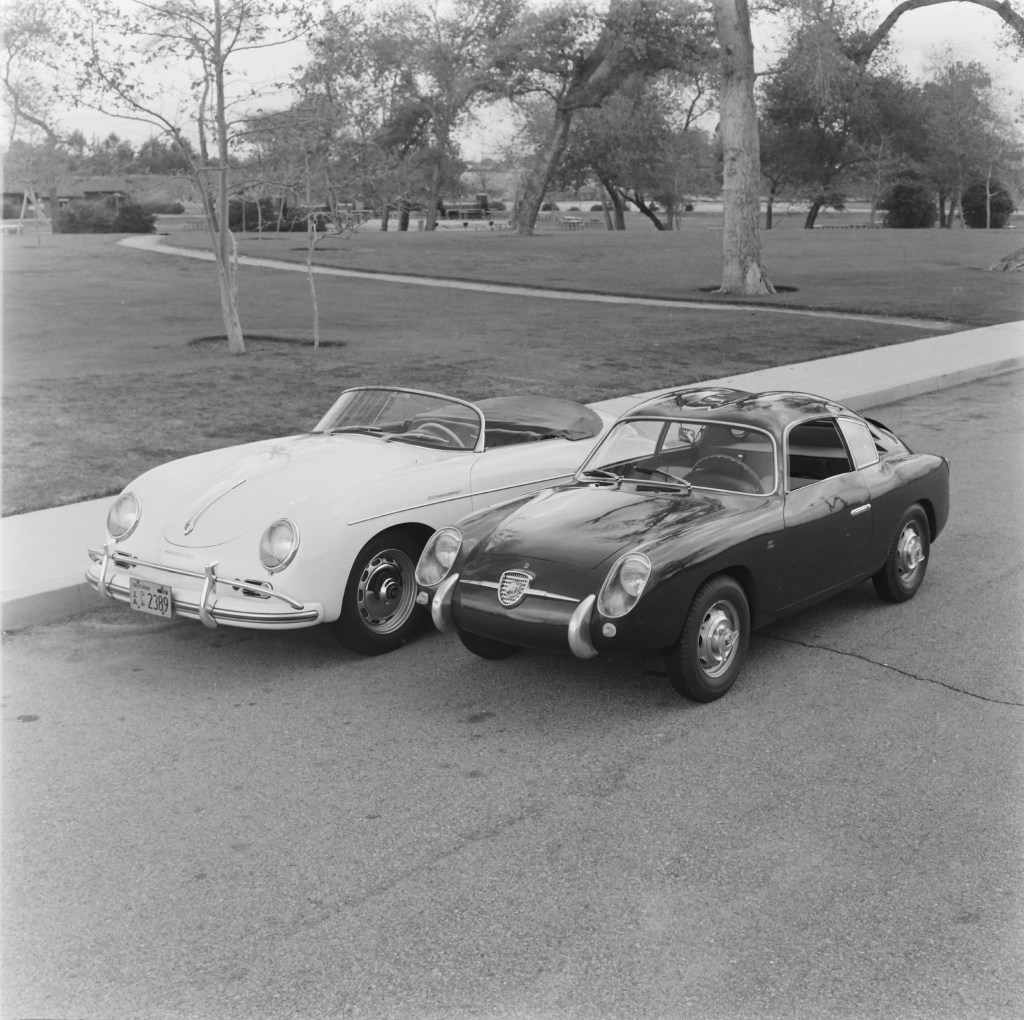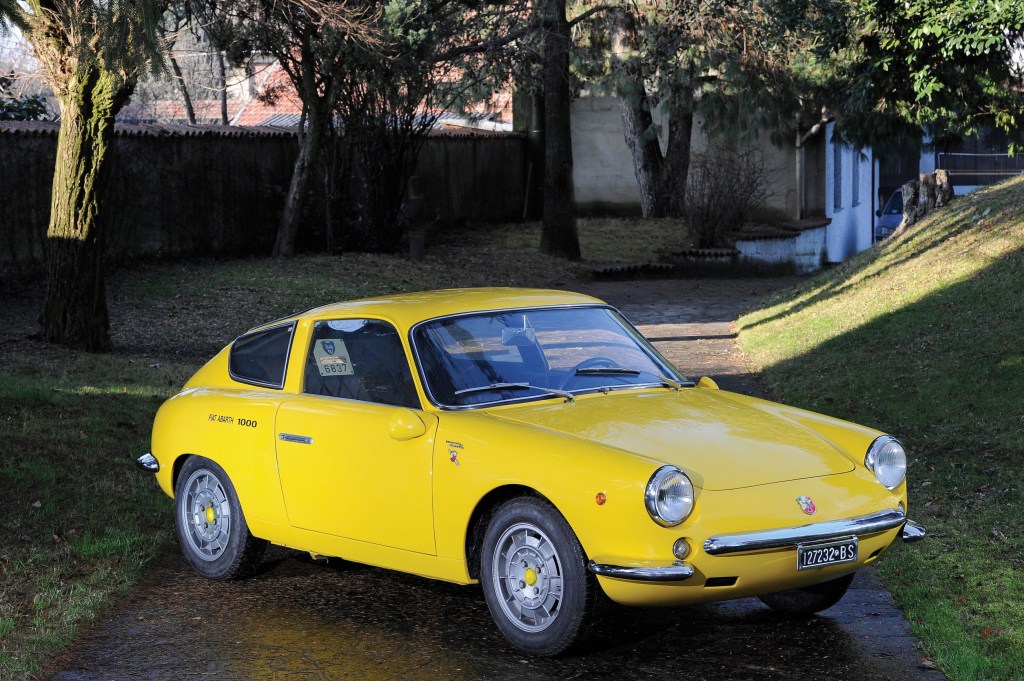
Fiat-Abarth Monomille GT: From 750 Race Car to Porsche 356 Rival
Here in the US, the Fiat 500 was the only car that got the Abarth treatment. Overseas, though, the Abarth scorpion has appeared on many cars over the years. And while the tuner’s strongest association (even before being bought out) is with Fiat, Abarth has tuned other companies’ cars in the past. One of those was the Porsche 356, the predecessor to the iconic 911. However, although it tweaked the 356, the scorpion brand also helped create a contemporary, all-Italian rival: the 750-based Fiat-Abarth Monomille GT.
Like the Porsche 356, the Fiat-Abarth 750 GT Zagato showed how light weight can trump big power

While it was practical and fairly advanced for its day, the Fiat 600 wasn’t exactly a race car. But Carlo Abarth turned it into one, punching out its engine to increasingly larger capacities, culminating in the 1970 Fiat-Abarth 1000 TCR. However, before that happened, the 600—or rather, its floorpan—became the basis for another race car: the Fiat-Abarth 750.
The Fiat-Abarth 750 uses the 600’s rear-mounted powertrain, complete with a four-speed manual transmission. However, Abarth bored the standard 633cc liquid-cooled four-cylinder engine to 747cc and fitted an upgraded carburetor and camshaft. As a result, the 750 makes 44 rather than 23 hp, Hagerty reports. And in dual-overhead-cam Bialbero form, the engine makes 57 hp.
That doesn’t seem like much, but then, the Fiat-Abarth 750 is very light. Although it uses the 600’s floor pan, it has a custom tube-frame chassis and handmade aluminum bodywork by famed coachbuilder Zagato. In Record Monza trim, the Abarth 750 weighs less than 1300 lbs, Hagerty says. And the GT Zagato model, with the coachbuilder’s signature ‘double bubble’ roof, offers room for helmeted heads without sacrificing aerodynamics. So, even without the Bialbero engine, the 750 Zagato could go well over 80 mph, RM Sotheby’s says.
Combined with upgraded brakes and suspension, the Fiat-Abarth 750 Zagato was fast and sharp enough to keep up with larger-capacity race cars. It was a ‘giant killer,’ a term often used to describe another 1950s-era sports car: the Porsche 356, MotorTrend says. However, while the 356 also has a rear-engine design and rear-wheel drive, it differs in several crucial ways.
The Fiat-Abarth 750 went from racer to road-going sports car with the Monomille GT

Unlike the Abarth 750, the Porsche 356 has an air-cooled flat-four engine. And by 1960, the 356 1600 Super’s engine displaced 1.6 liters and made 75 hp. Plus, while the Fiat-Abarth 750 was an excellent race car, the Porsche could be both a solid race car and a reasonably practical road car. And at the time, Abarth didn’t have a similar dual-purpose car.
But that changed in 1961 when the Italian tuner launched the Fiat-Abarth Monomille GT, Bonhams explains. It’s based on the 750 Record Monza, with similar suspension and handmade aluminum body panels. But instead of a 747cc engine, it has a 982cc engine with a two-barrel Weber carburetor rated at 60 bhp.
Being a pushrod engine, the Monomille GT’s engine is easier to maintain, RM Sotheby’s says. However, it’s still powerful enough to let the little coupe—it only has a 78.7” wheelbase—comfortably go over 100 mph. And to help it slow down, the Fiat-Abarth Monomille GT swapped out the 750’s front drum brakes for discs.
While the Fiat-Abarth Monomille GT isn’t exactly spacious, it does have some on-road-focused features. Besides the leather bucket seats and full upholstery, it also has a usable rear storage compartment. And buyers could spec their cars with either exposed or Plexiglas-covered headlights.
The hand-built Monomille was more expensive than the 356 then and still is now
While the Fiat-Abarth Monomille GT made the 750 into something more practical, that didn’t make it cheap. Back in 1961, a Monomille GT cost roughly 30% more than a Porsche 356, Bonhams says. And while some 356s are more expensive today, overall, these Abarth coupes tend to be the pricier pick.
A good-condition Porsche 356 1600 Super typically costs $63,000 these days, Hagerty says. A similar-condition Fiat-Abarth 750 GT Zagato costs about $7000 more, though. But owing to their rarity, Monomille GTs are even more expensive. It’s not unusual to see examples crossing the block for over $100,000. And experts estimate Abarth made no more than 100 examples
That makes the Fiat-Abarth Monomille GT a rare and valuable scorpion, not to mention a somewhat unusual one. But that’s also arguably part of its charm.
Follow more updates from MotorBiscuit on our Facebook page.


